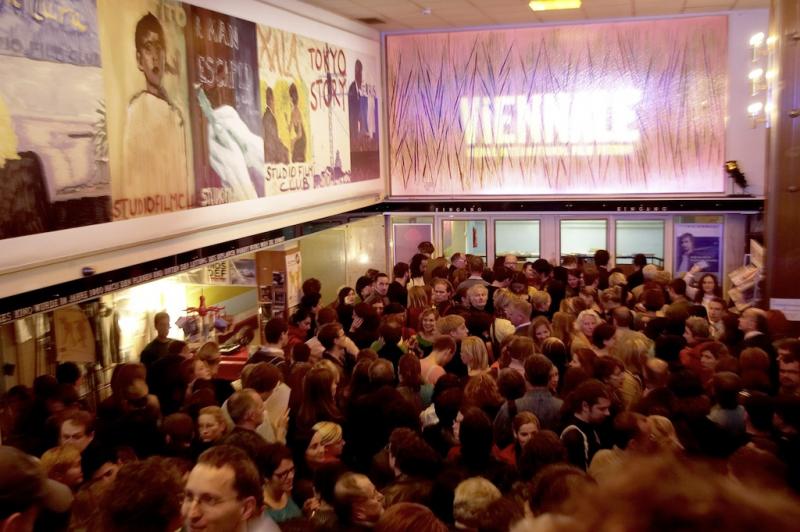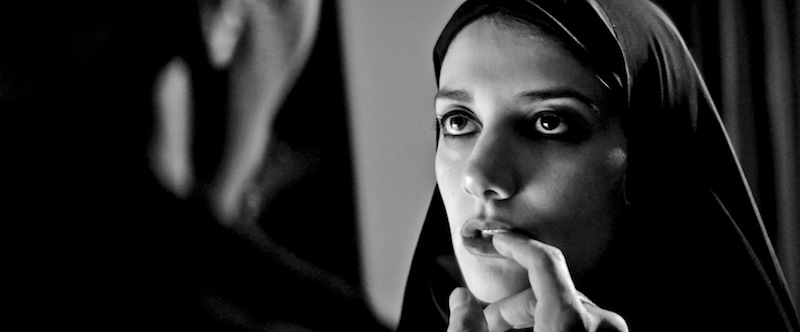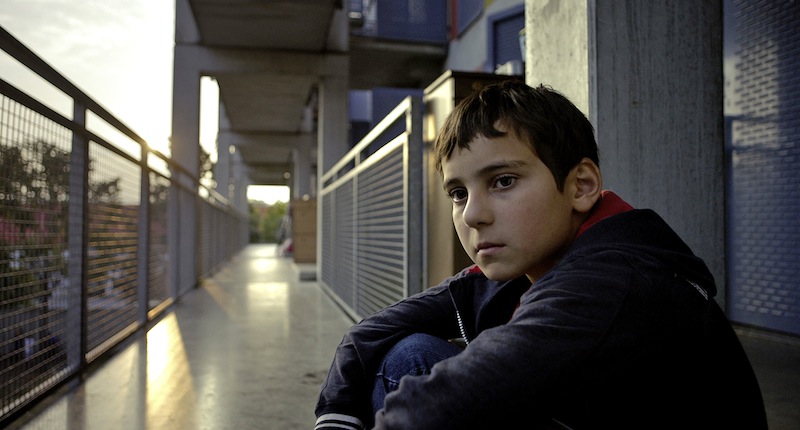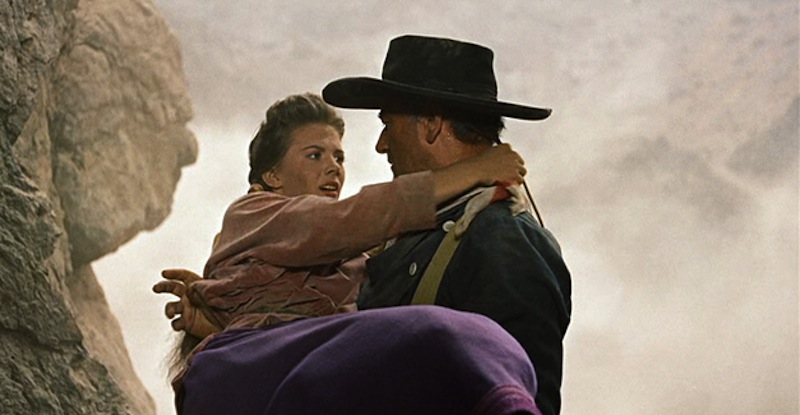theartsdesk at the Viennale | reviews, news & interviews
theartsdesk at the Viennale
theartsdesk at the Viennale
The vitality of Vienna's film festival prevents the city from resting on its laurels

We’ve grown accustomed to cinemas asking punters to pocket their cell phones, or prohibiting food and drink inside the auditorium. But an unassuming sign on the doors of the Gartenbaukino in Vienna has a different plea: Bitte nicht laufen. Please don’t run.
This request is posted during the Vienna Film Festival, or Viennale, for the über-enthusiastic local audiences who make a dash for the best seats in the 700-plus-seater cinema. I witnessed one such surge, for the jazz and mind games American drama Whiplash; as a female colleague was swept along by a wave of excited film buffs, her backwards glance was comically resigned to how little control she had.
There has been a Gartenbaukino on Vienna’s famous Ringstraße since 1919, but the current building opened in 1960 with Kubrick’s Spartacus. It was the first in the city to play 70 mm films, remains one of its few single-screen cinemas and is a beauty, with its funky Sixties foyer and café, all colour and multiple planes, its deep auditorium marked by glowing side panels and chequered ceiling.
The festival’s main venue, cinemas like this and the Urania (in an art deco building on the Wien river, whose dome actually contains an observatory) epitomise the spirit of the Viennale as modern, vibrant and rather hip. It’s ranked by travelling cinephiles as one of the best film festivals in Europe, not just for its quality, but for the sheer fun of it.
The big wheel in the Prater amusement park continues to remind us of Orson Welles’s comments in 'The Third Man' Vienna is no slouch when it comes to culture, of course. History and art history are worn on the sleeve here – in the baroque palaces, Wagner’s art nouveau train stations and the restrained modernism of Loos’s public buildings, dripping from the chandeliers of cafes that were home to the city’s artists and intelligentsia; in film terms, the big wheel in the Prater amusement park continues to remind us of Orson Welles’s comments about Borgias and cuckoo clocks in The Third Man.
I like William Boyd’s comment about the “Viennese antithesis”, which he ascribes to the fact that “this small, safe, solid, beautiful, bourgeois capital city should have housed in the early years of the 20th century such a contrapuntal, boiling ferment of modernism in every art form.”
Indeed, while here I’ve been able to indulge in fabulous exhibitions of Miró at the Albertina, Giacometti at the Leopold Museum (which houses the world’s largest Schiele collection) and a small but divine Velázquez show at the Kunsthistorisches Museum – all with the ease that one associates with a city frequently cited the most liveable in the world.
That said, many locals feel that since the Allies vacated Vienna in the Fifties the city has had a tendency to live in its remarkably well-preserved past. Many also believe that stagnation is averted to a considerable degree by the vitality of the Viennale. The festival is aimed squarely at local audiences and is hugely popular with them, especially the younger ones; this year it broke its attendance record by attracting nearly 100,000 people.
 Both its popularity and its influence have become pronounced under the 18-year stewardship of charismatic festival director Hans Hurch. The Viennale isn’t a premiere-orientated festival such as Berlin, Cannes or Venice, drawing films that have mostly screened elsewhere. Yet Hurch is at pains to make the distinction that he’s not showing the “best of” the year’s films, but the “most important”, alluding to the festival’s predilection for political themes and experimental approaches.
Both its popularity and its influence have become pronounced under the 18-year stewardship of charismatic festival director Hans Hurch. The Viennale isn’t a premiere-orientated festival such as Berlin, Cannes or Venice, drawing films that have mostly screened elsewhere. Yet Hurch is at pains to make the distinction that he’s not showing the “best of” the year’s films, but the “most important”, alluding to the festival’s predilection for political themes and experimental approaches.
So there’s no surprise that the main programme this year included films by established iconoclasts Jean-Luc Godard, Bruno Dumont, the Dardennes brothers, Pedro Costa, Peter Strickland, James Benning, Lisandro Alonso, Miike Takashi and Abel Ferrara, the last turning up for an extended and typically mercurial appearance at the festival.
But there was also strong work by newcomers, including two of the year’s word-of-mouth sensations, Damien Chazelle’s aforementioned Whiplash, the best (if not the only) film about drumming you’ll ever see, and Ana Lily Amirpour’s Iranian vampire movie A Girl Walks Home Alone At Night (fabulous fun, though not as groundbreaking as its description would suggest).
 The Fipresci international critics’ prize (on whose jury I was, a member) was awarded to the Indian director Chaitanya Tamhane for his superb debut, Court, a deceptively sophisticated and ire-inducing account of the iniquities of his country’s legal system. And the Vienna Film Prize, for an Austrian feature, was given to Sudabeth Mortezai’s first film Macondo (pictured right). Following an 11-year-old Chechen boy, in the eponymous, ethnic suburb of Vienna, the film is a subtle account of culture clash and adolescence, with an astonishing performance by the lad at its heart.
The Fipresci international critics’ prize (on whose jury I was, a member) was awarded to the Indian director Chaitanya Tamhane for his superb debut, Court, a deceptively sophisticated and ire-inducing account of the iniquities of his country’s legal system. And the Vienna Film Prize, for an Austrian feature, was given to Sudabeth Mortezai’s first film Macondo (pictured right). Following an 11-year-old Chechen boy, in the eponymous, ethnic suburb of Vienna, the film is a subtle account of culture clash and adolescence, with an astonishing performance by the lad at its heart.
Documentaries are a key part of the festival. and this year’s programme included Hubert Sauper’s We Come As Friends, concerning the partition of Sudan in 2011 (which won the Film Prize for an Austrian documentary); International Tourism, an imaginatively constructed dig at the way North Korea presents itself to the outside world; the superbly engaging Red Army, about the politics and personal heartache behind the Soviet Union’s all-conquering hockey team; and Ming of Harlem: Twenty-One Storeys in the Air, about a rum fellow who kept a tiger and an alligator as pets in his New York apartment.
 Possibly the festival’s best element is its sidebars. This year these included homages to Viggo Mortensen and the Algerian filmmaker Tariq Tequia, regarded as one of the most important chroniclers of the Arab Spring, and an extensive retrospective of John Ford, in conjunction with the Austrian Film Museum.
Possibly the festival’s best element is its sidebars. This year these included homages to Viggo Mortensen and the Algerian filmmaker Tariq Tequia, regarded as one of the most important chroniclers of the Arab Spring, and an extensive retrospective of John Ford, in conjunction with the Austrian Film Museum.
And then there was Revolutions in 16 mm, a tribute to the film format that has long liberated and inspired filmmakers of every ilk, with programmes on home movies, erotic cinema, war documentaries, avant-garde cinema and others. Such is the constantly surprising nature of the Viennale, that I discovered the Scopitone films – 16 mm films played on a sort of video jukebox that were a forerunner of music videos and hugely popular in France between the Fifties and Seventies.
A programme of dozens of Scopitone films revealed a world of laughably bad pop and entertainingly high kitsch. Its curator told us that “this programme won’t make you better people, but I guess happier”. At the Viennale I felt better, happier, more informed and inspired. I’ve already bought my running shoes for next year.
The future of Arts Journalism
You can stop theartsdesk.com closing!
We urgently need financing to survive. Our fundraising drive has thus far raised £49,000 but we need to reach £100,000 or we will be forced to close. Please contribute here: https://gofund.me/c3f6033d
And if you can forward this information to anyone who might assist, we’d be grateful.

Subscribe to theartsdesk.com
Thank you for continuing to read our work on theartsdesk.com. For unlimited access to every article in its entirety, including our archive of more than 15,000 pieces, we're asking for £5 per month or £40 per year. We feel it's a very good deal, and hope you do too.
To take a subscription now simply click here.
And if you're looking for that extra gift for a friend or family member, why not treat them to a theartsdesk.com gift subscription?
more Film
 Die My Love review - good lovin' gone bad
A magnetic Jennifer Lawrence dominates Lynne Ramsay's dark psychological drama
Die My Love review - good lovin' gone bad
A magnetic Jennifer Lawrence dominates Lynne Ramsay's dark psychological drama
 Bugonia review - Yorgos Lanthimos on aliens, bees and conspiracy theories
Emma Stone and Jesse Plemons excel in a marvellously deranged black comedy
Bugonia review - Yorgos Lanthimos on aliens, bees and conspiracy theories
Emma Stone and Jesse Plemons excel in a marvellously deranged black comedy
 theartsdesk Q&A: director Kelly Reichardt on 'The Mastermind' and reliving the 1970s
The independent filmmaker discusses her intimate heist movie
theartsdesk Q&A: director Kelly Reichardt on 'The Mastermind' and reliving the 1970s
The independent filmmaker discusses her intimate heist movie
 Blu-ray: Wendy and Lucy
Down-and-out in rural Oregon: Kelly Reichardt's third feature packs a huge punch
Blu-ray: Wendy and Lucy
Down-and-out in rural Oregon: Kelly Reichardt's third feature packs a huge punch
 The Mastermind review - another slim but nourishing slice of Americana from Kelly Reichardt
Josh O'Connor is perfect casting as a cocky middle-class American adrift in the 1970s
The Mastermind review - another slim but nourishing slice of Americana from Kelly Reichardt
Josh O'Connor is perfect casting as a cocky middle-class American adrift in the 1970s
 Springsteen: Deliver Me From Nowhere review - the story of the Boss who isn't boss of his own head
A brooding trip on the Bruce Springsteen highway of hard knocks
Springsteen: Deliver Me From Nowhere review - the story of the Boss who isn't boss of his own head
A brooding trip on the Bruce Springsteen highway of hard knocks
 The Perfect Neighbor, Netflix review - Florida found-footage documentary is a harrowing watch
Sundance winner chronicles a death that should have been prevented
The Perfect Neighbor, Netflix review - Florida found-footage documentary is a harrowing watch
Sundance winner chronicles a death that should have been prevented
 Blu-ray: Le Quai des Brumes
Love twinkles in the gloom of Marcel Carné’s fogbound French poetic realist classic
Blu-ray: Le Quai des Brumes
Love twinkles in the gloom of Marcel Carné’s fogbound French poetic realist classic
 Frankenstein review - the Prometheus of the charnel house
Guillermo del Toro is fitfully inspired, but often lost in long-held ambitions
Frankenstein review - the Prometheus of the charnel house
Guillermo del Toro is fitfully inspired, but often lost in long-held ambitions
 London Film Festival 2025 - a Korean masterclass in black comedy and a Camus classic effectively realised
New films from Park Chan-wook, Gianfranco Rosi, François Ozon, Ildikó Enyedi and more
London Film Festival 2025 - a Korean masterclass in black comedy and a Camus classic effectively realised
New films from Park Chan-wook, Gianfranco Rosi, François Ozon, Ildikó Enyedi and more
 After the Hunt review - muddled #MeToo provocation
Julia Roberts excels despite misfiring drama
After the Hunt review - muddled #MeToo provocation
Julia Roberts excels despite misfiring drama
 Ballad of a Small Player review - Colin Farrell's all in as a gambler down on his luck
Conclave director Edward Berger swaps the Vatican for Asia's sin city
Ballad of a Small Player review - Colin Farrell's all in as a gambler down on his luck
Conclave director Edward Berger swaps the Vatican for Asia's sin city

Add comment